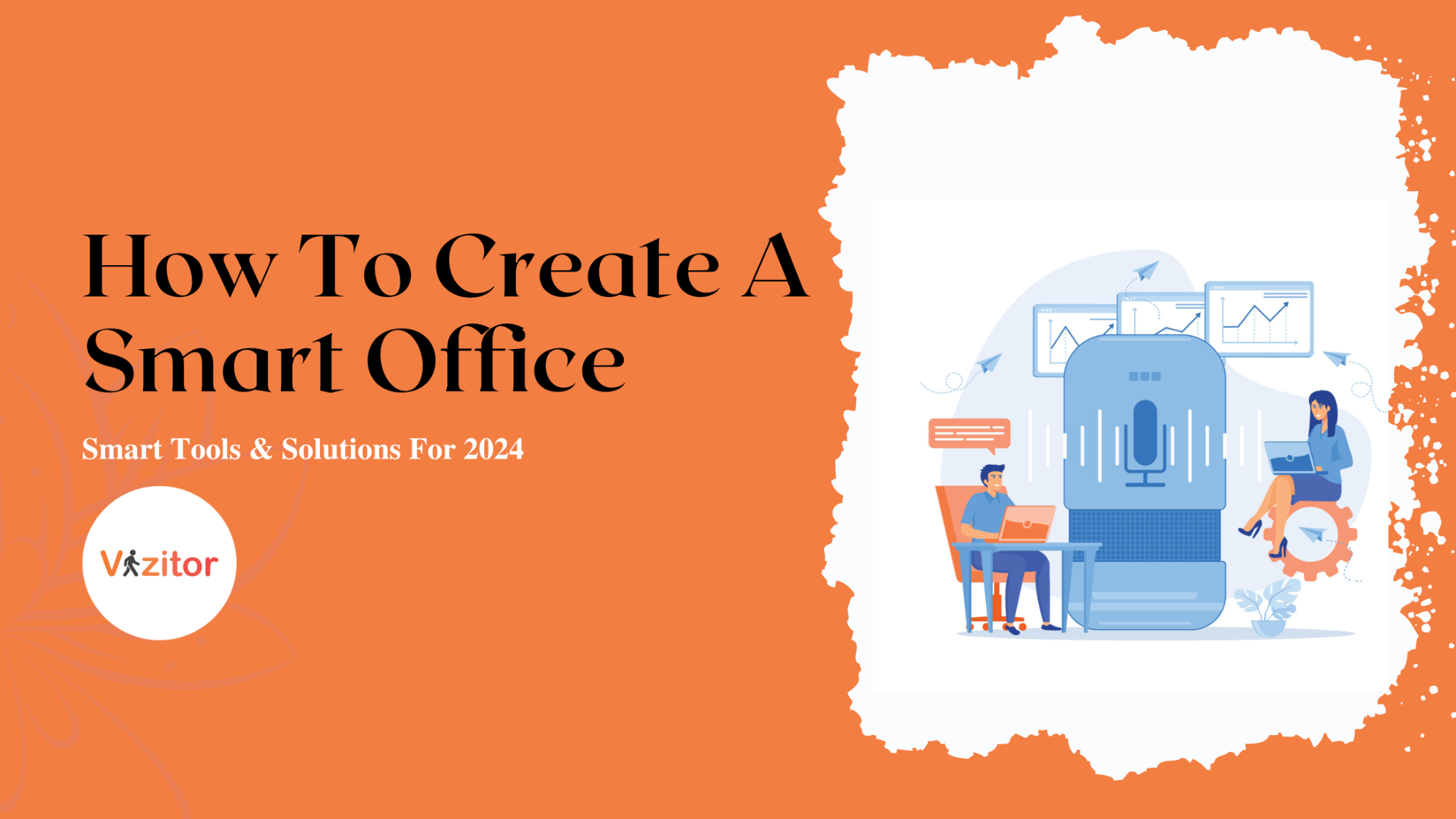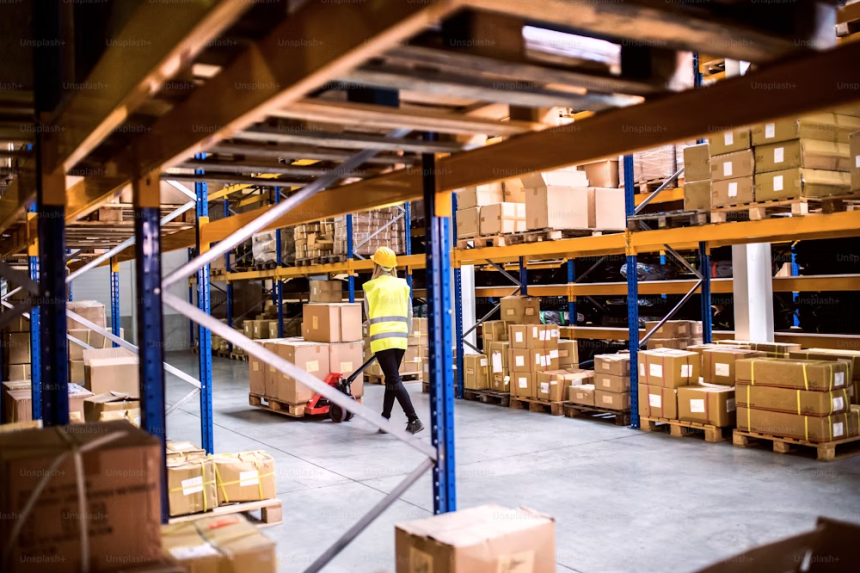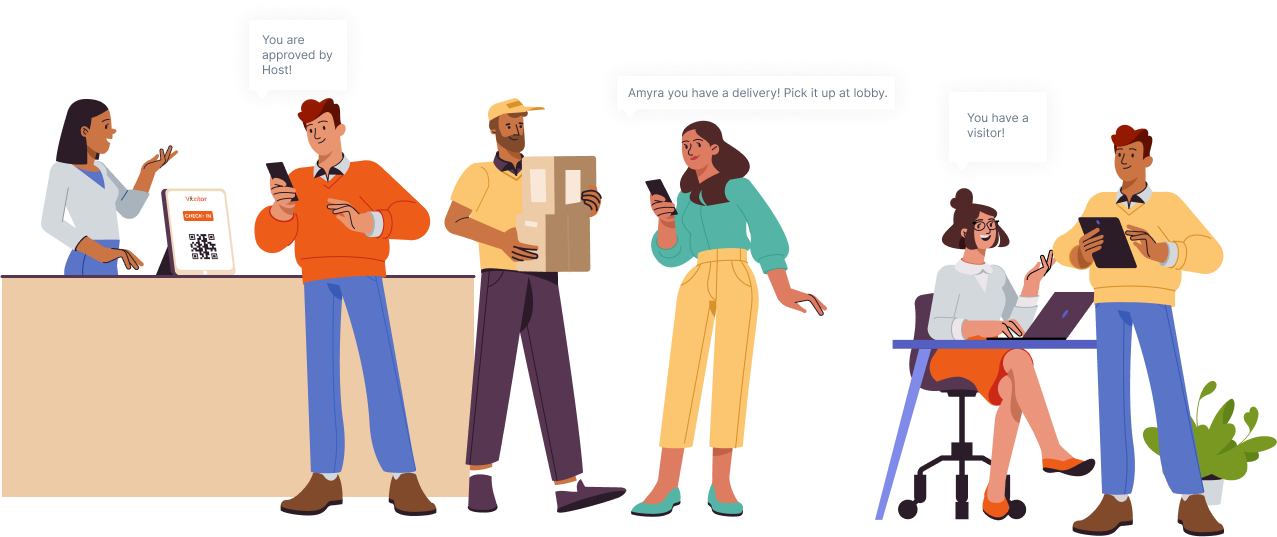Table of Content
Try Vizitor for Free!

Thu, Nov 23, 2023
Read in 11 minutes
Introduction
Did you know that by 2024, around 80% of offices are expected to use smart technology? For instance, some offices now have smart lights that automatically adjust to save energy based on the time of day and how many people are in the room. This is just one example of how smart tools are changing the way we work.
The idea of a smart office started because we wanted to make workspaces more efficient, flexible, and eco-friendly. Instead of just adding new gadgets, a smart office rethinks how we design and manage workspaces to improve productivity and comfort.
Artificial Intelligence (AI) is a big part of this change. AI helps by automating tasks, analyzing data, and creating more secure and personalized work environments. For example, AI can help schedule meetings, monitor security, and adjust workspaces to fit individual needs, making work life easier and more efficient.
In this guide, we’ll look at how to set up a smart office with the latest tools and solutions for 2024 and see how these innovations can make your workplace better.
What Is A Smart Office?
A smart office is a modern workspace that uses advanced technology to enhance productivity, efficiency, and comfort. It incorporates a range of smart tools and solutions designed to streamline daily operations and improve the overall work environment.
Here are some key features of a smart office:
1. Advanced Technology Integration
Smart office use technologies like Internet of Things (IoT) devices, artificial intelligence (AI), and automated systems. This includes smart lighting that adjusts based on occupancy, climate control systems that optimize energy use, and high-tech conference rooms with video conferencing capabilities.
2. Enhanced Connectivity
A smart office leverages seamless connectivity through integrated systems that allow devices to communicate with each other. For example, smart sensors can detect when a room is occupied and adjust lighting and temperature automatically.
3. Improved Efficiency
Automation plays a significant role in smart offices. Tasks such as scheduling meetings, managing workflows, and monitoring equipment can be automated to save time and reduce human error. This leads to more streamlined operations and increased productivity.
4. Employee Comfort and Well-being
Smart offices are designed with employee comfort in mind. Features like ergonomic furniture, smart temperature controls, and ambient lighting contribute to a healthier and more enjoyable work environment.
5. Data-Driven Insights
Smart offices collect and analyze data to provide insights into various aspects of office performance. This can include energy usage, space utilization, and employee preferences. These insights help in making informed decisions to further improve the office environment.
Why Do Businesses Require Smart Workplaces for Employees?
The need for smart workplaces needs to be more self-explanatory. The primary reason is to ensure a smooth transition among employees. Business owners must look for resource management software to smooth the workflow.
Here are a few reasons to include an employee management system in your organization:
1. Boosting Productivity with Tech Magic
In smart workplaces, technology takes center stage as a productivity guru. Imagine a workplace where management scheduling software handles routine tasks. Tracking employees’ time to focus on their work efficiency and detailed reports. Such tech-savvy workspaces are the secret sauce for a streamlined business operation. They help to automate processes to lightning-fast communication tools.
2. Unleashing the Power of Teamwork
Smart workplaces aren’t just about gadgets; they create a teamwork wonderland. Picture an environment where collaboration flows seamlessly. Every team member feels connected, whether in the same office or miles apart, in a world that thrives on collaboration and a stage for teams to shine and bring creativity to the forefront.
3. Happy Employees, Happy Business
Have you ever heard the saying, “A happy employee is a productive employee”? Well, this proves to be true in the realm of smart workplaces. Businesses realize that employee well-being isn’t just a buzzword – it’s a game-changer. After all, a workplace that cares about its employees is destined for success.
4. Staying Ahead in the Innovation Race
Staying ahead of the curve is the key to success in the fast-paced business race. Smart workplaces aren’t just a reflection of the present but a glimpse into the future. By embracing a digital workplace strategy, businesses create an environment that adapts to industry trends. It’s not just a workplace; it’s a hub of innovation where the next big idea is always on the horizon.
6 Key Strategies for a Smart Workplace
Creating a smart workplace means using technology to improve how people work and manage resources. Here are six practical strategies to make your workplace smarter and more efficient:
1. Use Comprehensive Resource Management Software
Invest in enterprise resource planning (ERP) software to manage your projects and resources. This type of software brings all your data together in one place, making it easier for teams to collaborate and use resources efficiently. For example, if multiple departments are working on the same project, ERP can help coordinate their efforts and ensure everyone has what they need.
2. Adopt Digital Workplace Management Tools
Use tools that enhance connectivity and efficiency in the workplace. Digital management tools allow for real-time communication, collaborative document sharing, and project tracking. Tools like Slack for communication and Google Workspace for document collaboration can help keep everyone on the same page and boost productivity.
3. Implement Project Management Scheduling Software
Use scheduling software to plan and execute projects more effectively. These tools help with setting deadlines, assigning tasks, and tracking progress. For instance, software like Asana or Trello allows you to create timelines, assign tasks to team members, and monitor project milestones, helping ensure that projects stay on track.
4. Integrate Employee Management Systems
Use an employee management system to streamline HR tasks, from hiring to performance reviews. This system centralizes employee information, making it easier to manage and access. Systems like BambooHR or Workday can simplify processes such as onboarding, tracking performance, and managing benefits.
5. Utilize Project Management Resource Planning Tools
Implement tools that help allocate resources effectively across various projects. These tools give you insights into resource availability, helping prevent overallocation and ensuring resources are used efficiently. Software like Microsoft Project or Smartsheet can help you visualize and manage resource distribution.
6. Embrace Intelligent Automation
Take advantage of automation features in your resource management software to reduce manual work. Automated workflows can handle repetitive tasks, freeing up employees to focus on more important activities. For example, automating routine data entry or report generation can save time and reduce errors.
Types of Smart Office Technology
As technology continues to evolve, smart office solutions are becoming a key part of modern workplaces. But what exactly does “smart office technology” mean? It’s about using advanced tools to make the workplace more efficient, comfortable, and flexible.
For instance, imagine being able to easily switch between working from home and the office, or having a desk that adjusts automatically to your height. These aren’t just futuristic ideas—they’re happening now.
Smart office technology includes several key types:
1. Hybrid Workplace Technology
This technology supports seamless working from both the office and home. With tools like video conferencing systems and cloud-based software, it’s easier to collaborate and stay connected, regardless of where you’re working.
2. AI Tools
Artificial Intelligence (AI) is transforming the workplace by automating routine tasks, helping with scheduling, analyzing data, and offering productivity suggestions. It’s like having a digital assistant that helps streamline your workday.
3. Smart Screens
These screens go beyond traditional displays. They can interact with users, adjust settings automatically, and provide important information like meeting schedules or office notifications. Some also support video calls and presentations.
4. Smart Furniture
This includes desks and chairs designed to adjust to your needs. For example, smart desks can change height at the push of a button, and smart chairs offer better support and reminders to maintain good posture.
Types of Smart Office Solutions
Smart office solutions are designed to improve efficiency, security, and comfort in the workplace. Here are some key types:
1. Occupancy Sensors
These sensors detect when people are in a room and adjust lighting, heating, or cooling accordingly. They help save energy by ensuring that systems are only active when needed. For example, if a room is empty, the lights can turn off automatically.
2. Video Monitoring Devices
These devices provide real-time surveillance of office spaces. They help enhance security by monitoring entrances, hallways, and other critical areas. Modern video monitoring systems and facial recognition can also use AI to detect unusual activity and alert security personnel.
3. Smart IoT Security Devices
Internet of Things (IoT) security devices include smart locks, alarms, and cameras that can be controlled remotely through smartphones or computers. These devices offer advanced security features, such as automatic locking systems, remote access control, and real-time alerts about potential security breaches.
4. Proactive Maintenance Systems
These systems use sensors and data analytics to monitor the condition of office equipment and infrastructure. They can predict when maintenance is needed before a problem occurs, helping to prevent downtime and extend the life of equipment. For example, a smart HVAC system might alert you when it’s time for a filter change.
Smart Technology for Private and Professional Business
In today’s fast-paced world, integrating smart technology into both private and professional settings can greatly enhance productivity, comfort, and efficiency. Here’s a look at some smart technologies that are making waves in modern businesses:
1. Smart Temperature Tools
These tools, such as smart thermostats, allow you to control and monitor the temperature of your office or home remotely. They can learn your preferences and adjust heating and cooling automatically, ensuring a comfortable environment while saving on energy costs.
2. Smart Lighting Solutions
Smart lighting systems can adjust brightness and color based on the time of day or occupancy. They can be controlled via smartphones or voice commands, and some systems even sync with your calendar to automatically set the right lighting for meetings or tasks.
3. Intelligent Coffee Machines
These advanced coffee machines can be programmed to brew your favorite coffee at specific times or on demand. Some models can be controlled via smartphone apps, allowing you to start brewing before you even arrive at the office.
4. Virtual Reality Devices
Virtual Reality (VR) devices are not just for gaming; they’re becoming valuable tools in business for virtual meetings, training sessions, and immersive presentations. VR can create engaging and interactive experiences that enhance collaboration and learning.
5. Automated and Interconnected Technology
This includes systems that connect various smart devices in your office or home to work together seamlessly. For example, automated systems can coordinate your smart lights, temperature, and security devices to create a more efficient and integrated environment.
These smart technologies can transform your workspace or home into a more intelligent, connected, and enjoyable place. In this guide, we’ll explore how each of these innovations can benefit both private and professional settings.
Setting Up a Smart Workplace: Essential Considerations
A smart workplace isn’t just about high-tech gadgets; it’s about creating a digital ecosystem that boosts productivity, efficiency, and employee satisfaction. Here are some fundamental strategies and technologies for establishing a truly intelligent work environment.
1. Embrace Smart Workplace Technology
With the rise of smart workplace technology, companies are investing in tools that automate processes and enable employees to work more efficiently. This includes everything from smart lighting that adjusts automatically based on occupancy to digital collaboration tools that foster seamless communication.
2. Define the Smart Workspace for Your Business
Every business has unique needs, so defining a smart workspace that aligns with your goals is essential. Smart workspace technology can range from AI-powered scheduling assistants to digital signage that keeps employees informed. A clear smart workspace definition will help prioritize the technologies that offer the most value to your team.
3. Invest in Smart Workplace Software
Choosing the right smart workplace software is a game-changer for managing resources, tracking employee activity, and improving project management. Popular options include cloud-based systems that allow employees to access information and collaborate from anywhere, enhancing connectivity and flexibility.
4. Utilize Smart Digital Workspaces for Flexibility
Creating a smart digital workplace means incorporating tools that allow employees to work remotely or from various locations within the office seamlessly. This flexibility is essential in today’s hybrid work model, enabling teams to collaborate effectively without being confined to a single space.
5. Explore Smart Technology in the Workplace
Smart technology in the workplace includes advanced devices like IoT-enabled thermostats, occupancy sensors, and AI-driven meeting scheduling tools. These technologies reduce energy costs, streamline daily tasks, and help businesses adapt quickly to employee needs.
6. How to Set Up a Smart Office
Wondering how to set up a smart office? Start by assessing the specific needs of your team, then choose technologies that align with those goals. Begin with essential systems, like occupancy sensors or project management tools, and build out your smart workplace infrastructure over time.
Get Smarter With Vizitor’s Smart Office Solutions
Vizitor has revolutionized workplaces for leading brands such as Hard Rock Cafe, which now benefits from our solutions across 175 locations worldwide, Snapdeal, and Retina Centre. These companies have successfully transformed their operations with our smart workplace technology, enhancing their efficiency and creating more connected, productive environments.
As we stand in a new era in the professional world, the journey toward a smart workplace is both thrilling and transformative. It allows employees and employers to work in a united manner. The higher work efficiency rates say it all. If you are looking for such advanced space management systems, try Vizitor. We believe in delivering quality over a trade deal!
Contact us to learn more about how!










